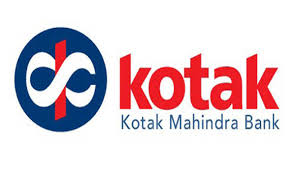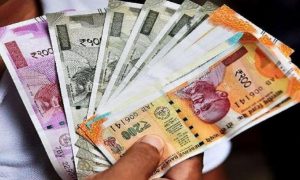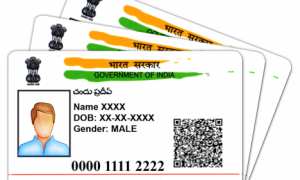Many private banks like Kotak Mahindra Bank, Axis Bank, and ICICI Bank have shown a significant rise in disbursement of unsecured loans last quarter, as per their latest quarterly results. During the outbreak of COVID-19, banks had excessively tightened their disbursement policy. But now, with the economy looking up, banks are gradually easing up, and disbursing more unsecured loans. For banks, unsecured loans are a source of better profit margins in, say analysts.
Going forward, analysts expect a significant rise in the retail unsecured loan portfolios of more banks this fiscal.
Although the data for year-on-year (YoY) growth for IndusInd Bank was not disclosed, the bank said during the announcement of their results that retail loans grew by 3 per cent on quarter-on-quarter(QoQ) basis, with significant pick-up in retail unsecured loans. Credit card lending grew 17.4 per cent QoQ, while personal loans climbed 9.5 per cent QoQ.
Here are the major reasons for private banks to be lending more unsecured loans compared to the previous years:
Loosening of disbursement policy:According to analysts, all banks tightened their disbursement policies during the COVID-19 pandemic, leading to a fall in the number of unsecured loans issued in the next year. But with the situation gradually getting back to normal, banks are modifying their disbursement policies to make loans accessible to more and more people. “The delinquency number might have moved up a bit but it is still much below the threshold level of banks. Given that these loans have somewhat higher margins, slightly higher delinquency is good enough for banks, as that is priced in the loan,” said Prakash Agarwal, President, Financial Services, India Ratings and Research.
Read More: Kotak Mahindra Bank Raises Fixed Deposit Interest Rates; Know Latest FD Rates
Higher loan rates than FD rates:With the Reserve Bank of India (RBI) raising rates, banks have increased their lending rates more than the deposit rates. “Banks haven’t increased fixed deposit (FD) rates as much as they have increased their lending rates. So, net interest margin (NIM) is increasing. Thus, they are giving out more loans to cover up the losses of the last two years, as disbursement was quite low (during that period),” said Siddharth Pandey, analyst at Bank of America.
Better profit margins:According to analysts, since lending rates are high, it is the most profitable business for banks. To adjust for the higher credit risks in the business, banks use higher lending rates drawing from the classic risk adjusted return paradigm.
“They will budget for a specific level of NPA and then charge the lending rate in such a way, so that even if non performing (NPAs) are somewhat higher than in other secured businesses, the higher lending rate will compensate for that. Secured loans like home loans have very fine lending rates, so banks’ profit margin is relatively lower for such loans despite lower NPAs,” added Krishnan Sitaraman, Senior Director & Deputy Chief Ratings Officer, CRISIL Ratings Limited.
Gradual fall in NPAs: As of March 2022, gross NPA stood at 5.9 per cent, which had previously touched 11.2 per cent in 2018. So, the gross NPA is coming down. It is likely to fall further this fiscal as corporate sector asset quality is likely to improve, according to analysts. Moreover, banks are trying to balance their portfolios, as secured loans form the bulk of their portfolios. “While NPAs in MSME loans could inch up, retail NPAs should be steady and many banks have a demonstrated track record of low NPAs in the retail segment, including in unsecured segments.” added Sitaraman.
Catering to the salaried customers: According to analysts it is primarily customers from the lower socio economic strata who struggle to repay these loans. But most private banks cater to customers with good credit history, are mostly salaried, and belonging to the upper and middle income group. Thus, the chances of defaults are minimal for them.
A word of caution for banks
Although, most of the banks have performed well in terms of dealing with NPAs, analysts have cautioned banks against being too confident in terms of disbursing unsecured loans, considering the economic turmoil India is going through. “Banks should not be too confident as there may come some challenges in the job sector that may affect repayment,” said Aggarwal.
Banks need to have proper credit appraisal and risk management systems in place to be able to deal with any possible defaults. That will help them keep NPAs under control, else in a fast growing book NPAs could rise. “Even if a bank is disbursing loans to salaried individuals or someone having regular earnings, it is important for the banks to evaluate their financial standing and repayment capabilities through adequate credit appraisal mechanisms,” added Sitaraman.
According to analysts, apart from the salaried or self-employed categorisation and credit bureau scores, banks have multiple attributes that go into their scorecards for arriving at lending decisions. Such scoring parameters include socio-economic factors which could now be populated based on the digital information about the borrower, such as physical location, educational qualifications, and details of friends and family members, which help in the socio-economic profiling of the borrowers and predictability of future defaults.
“Tighter underwriting, including granular and diversified credit portfolio, and smaller exposures to new-to-credit customers are some of the other precautionary measures that can be taken by banks to minimise the risk of NPAs,” added Aashay Choksey, Assistant Vice President, Financial Sector Ratings, ICRA.





































